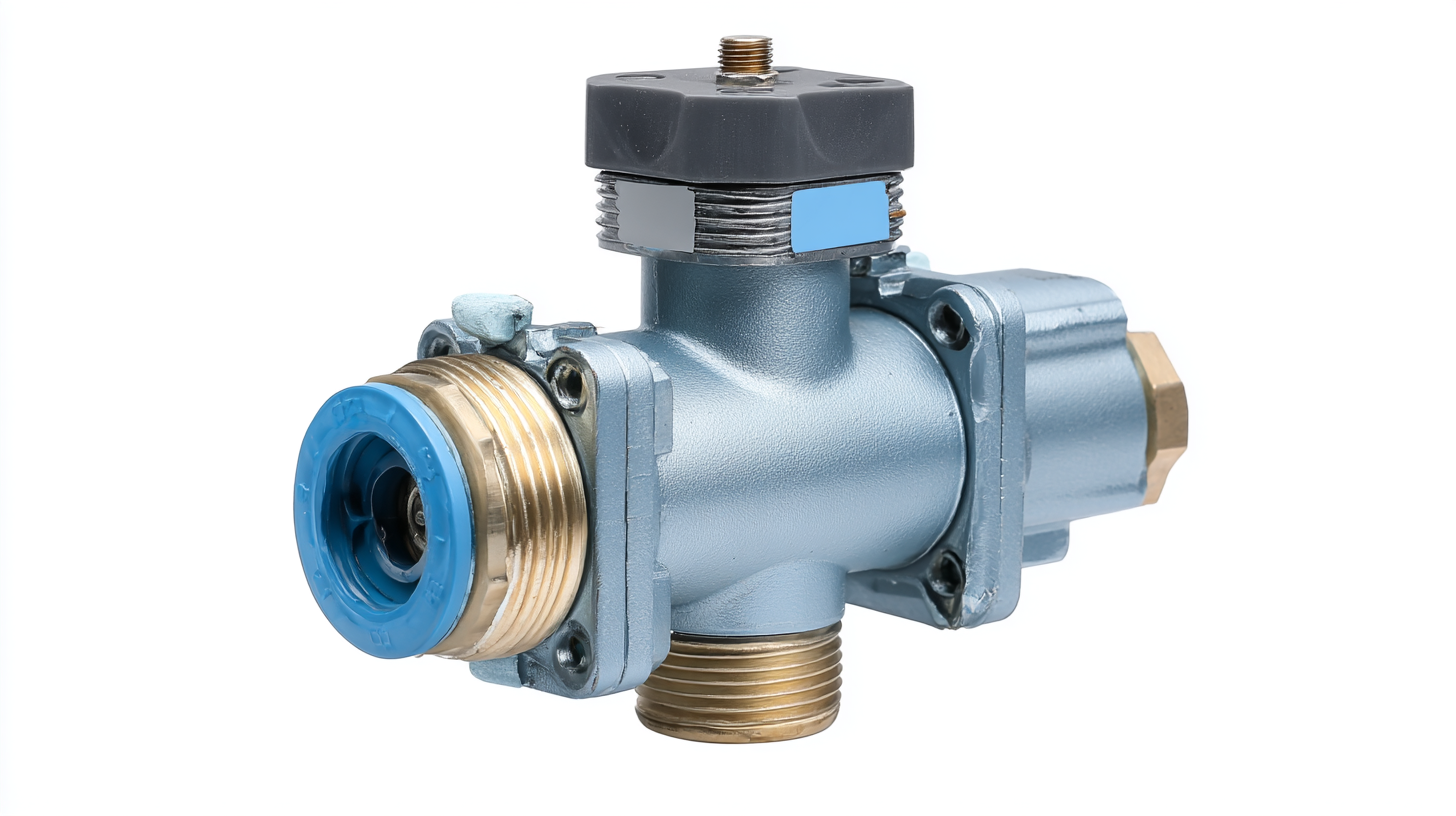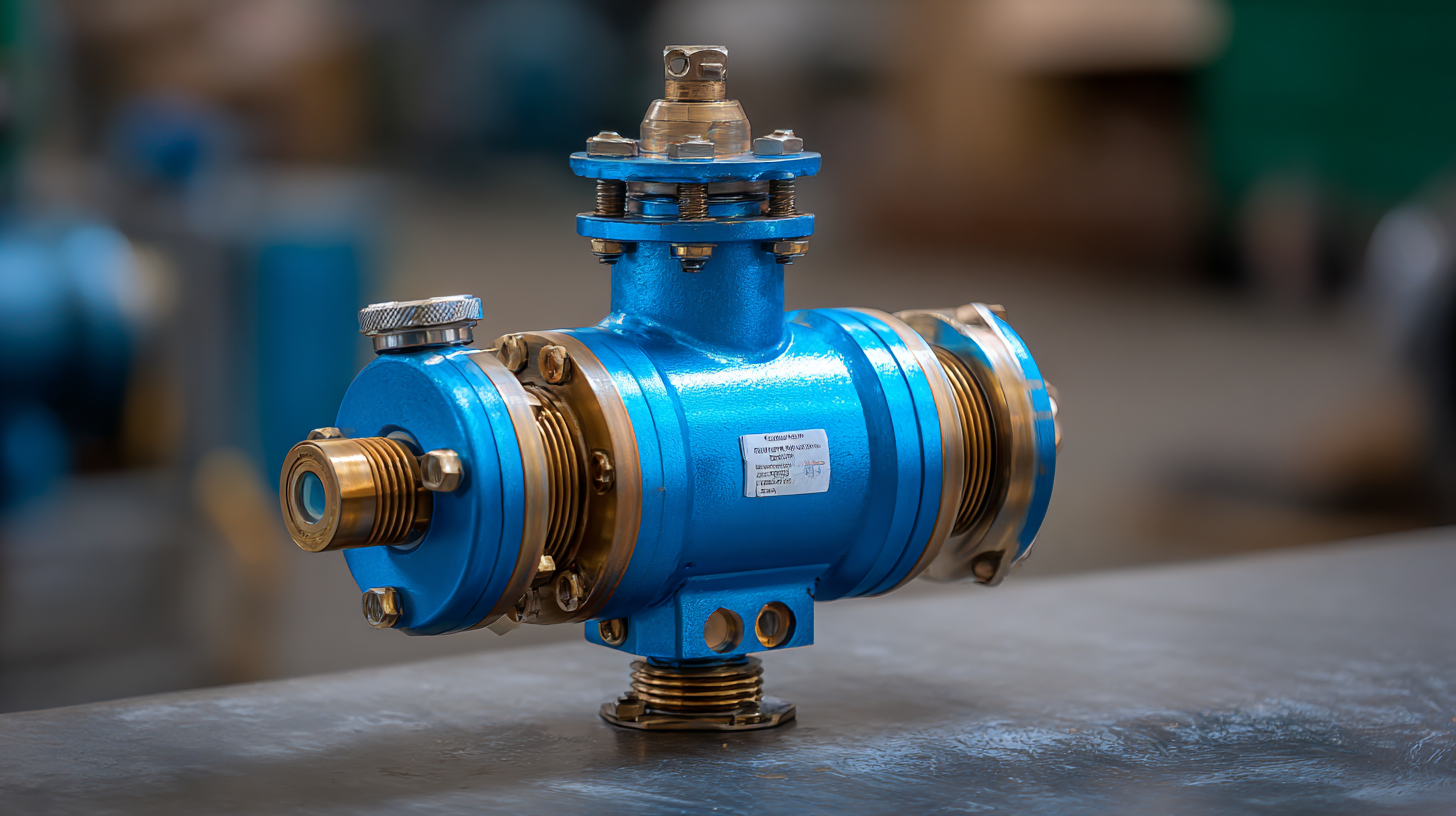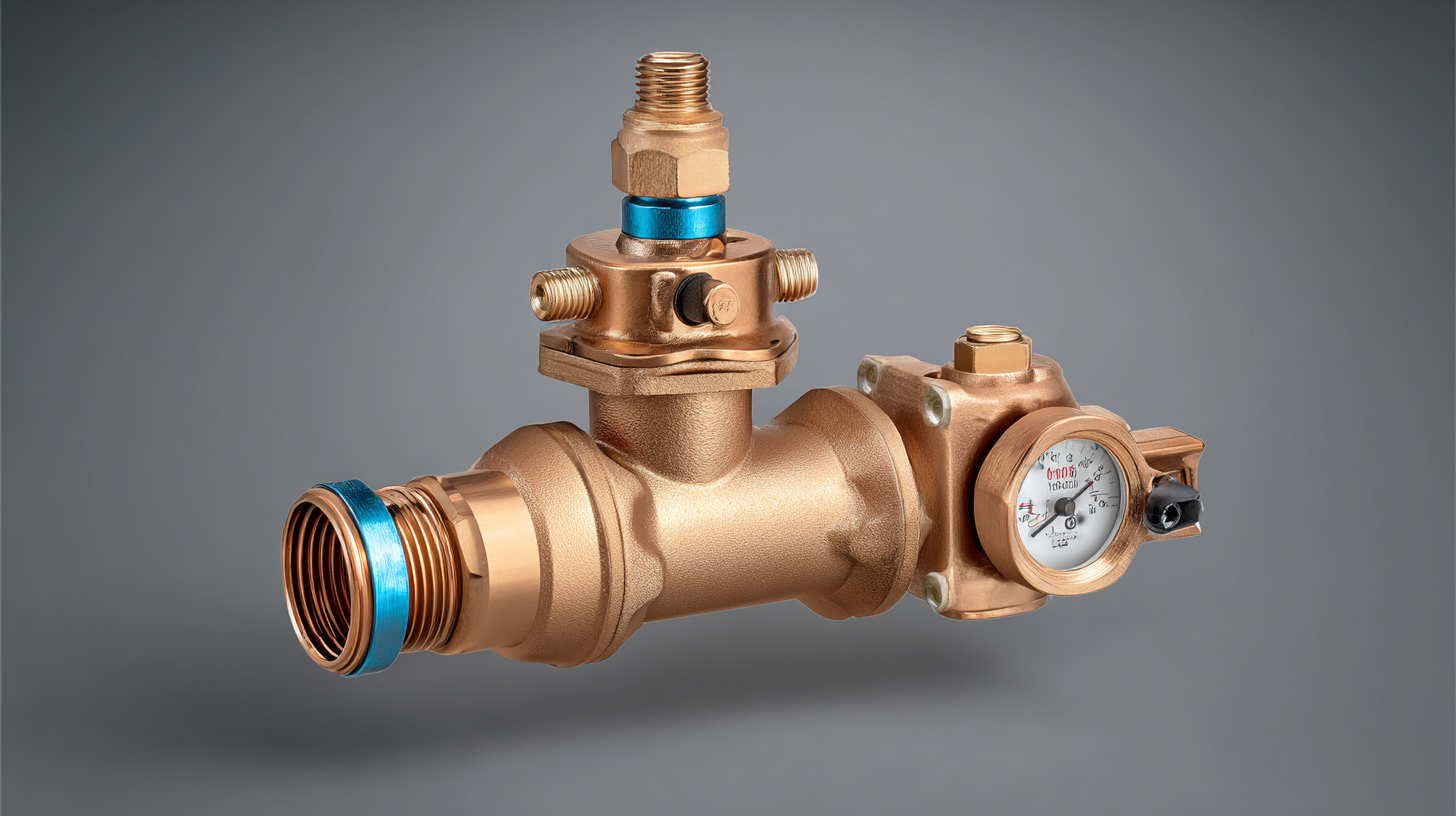Embracing Industry 2025 Innovations for the Ultimate Water Pressure Regulator Valve Solutions
In an era where technology and sustainability converge, the quest for effective water management solutions has gained paramount importance, particularly in the context of water pressure regulator valves. As industries strive towards the ambitious goals of Industry 2025, innovative advancements are reshaping the standards and functionalities of these crucial components. This blog explores a comparative analysis of the latest water pressure regulator valve technologies, highlighting their efficiency, reliability, and adaptability to diverse applications. By embracing these innovations, businesses not only enhance their operational performance but also ensure responsible water usage in an increasingly resource-conscious world. Join us as we delve into the future of water pressure regulation and discover the ultimate solutions that are set to revolutionize the industry.

Revolutionizing Water Pressure Regulation with Industry 2025 Technologies
In the quest for enhanced efficiency and sustainability, the water pressure regulation industry is witnessing a profound transformation driven by Industry 2025 technologies. These innovations are not just about maintaining optimal water pressure; they are revolutionizing how utilities manage resources and respond to demand fluctuations. According to a recent report by the International Water Association (IWA), smart water management solutions can reduce water losses by up to 25%, directly impacting both operational costs and environmental sustainability.
Advanced technologies such as IoT sensors, predictive analytics, and AI-driven algorithms are at the forefront of this revolution. These systems enable real-time monitoring and adjustments in water pressure, ensuring minimal waste and optimal distribution. The Global Water Pressure Regulator Market is projected to reach USD 4.1 billion by 2025, as utilities increasingly invest in modernizing infrastructure to accommodate these advanced capabilities. Such innovations not only improve efficiency but also contribute to achieving global sustainability goals by optimizing water usage patterns across urban and rural settings alike.
Water Pressure Regulation Innovations: A Comparative Analysis
This chart illustrates the average pressure regulation efficiency across various types of water pressure regulators. As technology has advanced, the efficiency of pressure regulation has improved significantly, particularly with the introduction of smart and automated systems.
Key Innovations in Water Pressure Regulators for Enhanced Efficiency
Water pressure regulators are essential components in modern water management systems, especially as urbanization accelerates and water scarcity becomes a pressing global challenge. Recent industry reports highlight that by 2025, the global market for water pressure regulators is expected to reach $4.5 billion, driven by the growing need for efficient water management solutions. Innovations in smart technology, such as automatic pressure adjustment and real-time monitoring, are revolutionizing these devices, enhancing their efficiency and reliability.
Key advancements are emerging in materials and design, with the adoption of durable, corrosion-resistant materials ensuring longevity and reduced maintenance costs. Furthermore, the integration of IoT (Internet of Things) capabilities is allowing users to remotely monitor and manage water pressure settings, leading to a potential 20% reduction in water waste, as reported by recent studies. As the water treatment sector faces pressures from both resource shortages and stricter regulations, embracing these innovations in water pressure regulation will be critical for achieving sustainability and optimizing resource use in the years ahead.
Embracing Industry 2025 Innovations for the Ultimate Water Pressure Regulator Valve Solutions
| Innovation Type | Description | Efficiency Gain (%) | Sustainability Impact |
|---|---|---|---|
| Dynamic Flow Control | Regulates pressure dynamically based on real-time flow data. | 25 | Reduces energy consumption significantly. |
| Smart Sensors | Utilizes IoT sensors for precise monitoring and control. | 30 | Improves resource management and minimizes waste. |
| Compact Design | Enhances installation in confined spaces while maintaining efficiency. | 20 | Promotes more sustainable urban infrastructure. |
| Self-Adjusting Valves | Automatically adjusts pressure settings based on usage patterns. | 28 | Reduces waste and extends equipment life. |
| Advanced Materials | Utilizes corrosion-resistant materials for longevity. | 15 | Lowers the environmental impact of materials used. |
Understanding the Impact of Industry Standards on Water Pressure Solutions
The integration of industry standards plays a critical role in enhancing water pressure solutions, especially in the face of evolving technological advancements. Recent initiatives, such as those highlighted by Hefei Water Group, underline the importance of reliable water supply systems. Their case study, recognized at the national level for promoting a better business environment, exemplifies how quantifiable governance methods can effectively improve water supply reliability. This development aligns with broader industry movements towards innovation, urging companies to embrace new technologies that comply with established standards.
Tips for implementing effective water pressure solutions include prioritizing compatibility with existing infrastructure and focusing on sustainability. Adoption of advanced pressure regulator valve technology can drastically reduce water wastage, providing both economic and environmental benefits. Moreover, keeping abreast of regulatory changes ensures that solutions not only meet current standards but are also future-proofed against upcoming industry shifts.
As we move toward Industry 2025, firms must foster a culture of continuous improvement in water management strategies. This includes investing in training for staff on the latest technologies and engaging in collaborative efforts with regulatory bodies to shape standards that promote efficiency and safety. Embracing such practices ensures that businesses not only thrive but also contribute positively to the overarching ecosystem of water resource management.

Integrating Smart Technology into Water Pressure Regulation Systems
The integration of smart technology into water pressure regulation systems is transforming the way we manage water resources. By harnessing advancements in Artificial Intelligence (AI) and the Internet of Things (IoT), these systems can now monitor and adjust water pressure in real-time, ensuring that we use water more efficiently. Smart valves equipped with sensors not only provide precise control over water flow but also collect valuable data that can inform future improvements in water management.

Moreover, the rise of intelligent and automatic irrigation systems demonstrates the significant benefits of digitalization in agriculture. By implementing fuzzy control technology, these systems can optimize water usage based on weather conditions and soil moisture levels, drastically reducing water waste. This innovation not only conserves precious water resources but also enhances crop yields, making it a win-win solution for farmers and the environment alike.
Embracing these industry 2025 innovations can lead us toward sustainable water practices, fostering a cleaner and more efficient future for irrigation and water distribution.
Future-Proofing Water Pressure Strategies: Insights from Industry 2025
As we delve into the age of Industry 2025, the need for innovative water pressure strategies has never been more critical. The evolving landscape of technology offers new avenues for enhancing operational efficiencies and reliability in water management systems. By adopting future-proofing techniques similar to those embraced in telecommunications and pharmaceuticals, players in the water sector can ensure sustained performance and resilience against potential disruptions. The integration of advanced data analytics and monitoring tools could revolutionize the way we manage water pressure, leading to optimized resource allocation and improved service delivery.
Moreover, the insights garnered from the strategic mergers and acquisitions seen in various industries reveal that collaboration and smart investments are key for future growth. Water pressure regulator valve solutions can benefit from similar approaches, fostering partnerships that allow for sharing cutting-edge technologies and best practices. As industries across the board pivot towards sustainability and efficiency, the water management sector stands to gain significantly by adopting a proactive stance in implementing Industry 2025 innovations, ensuring they are well-equipped to face future challenges head-on.
